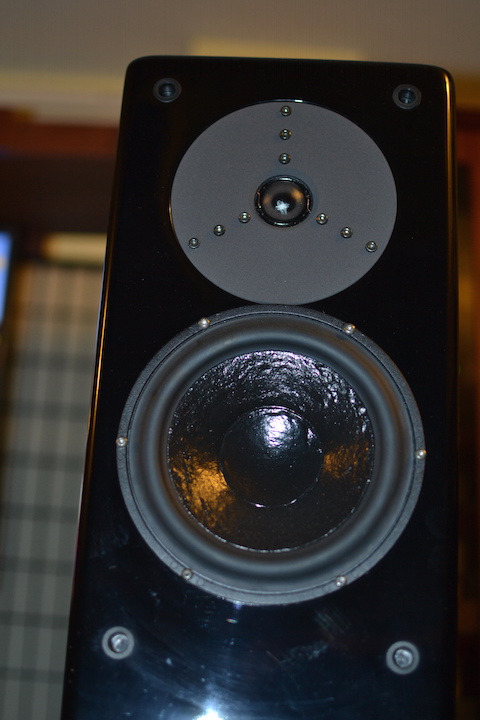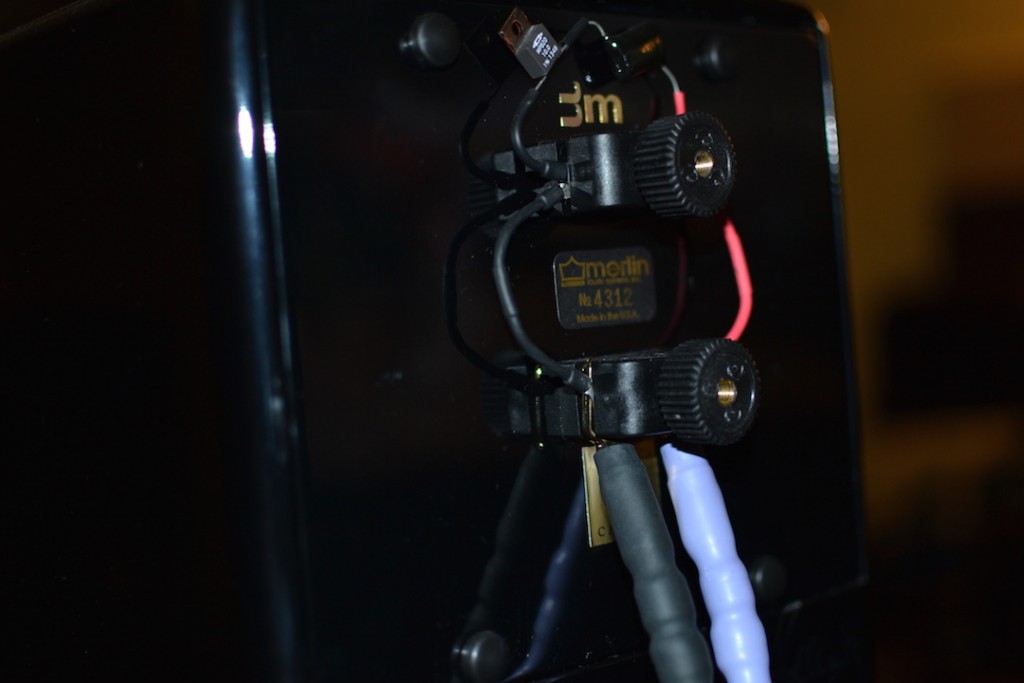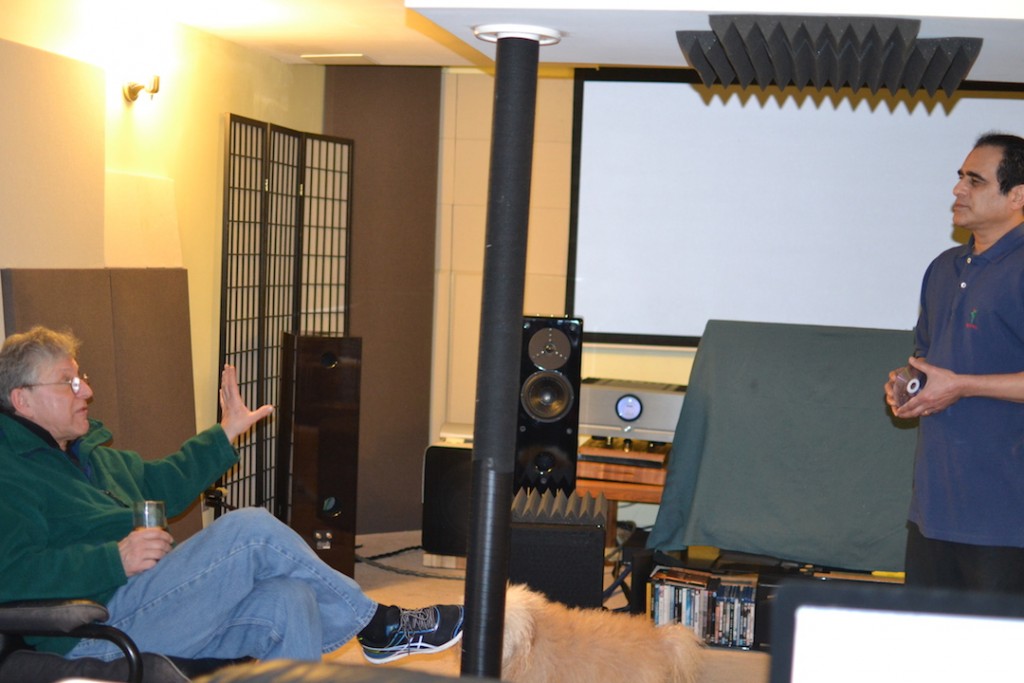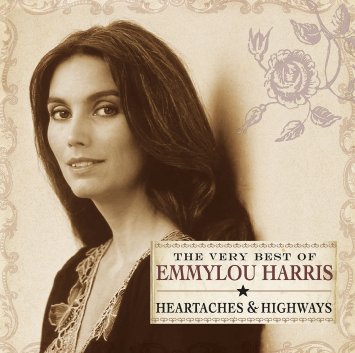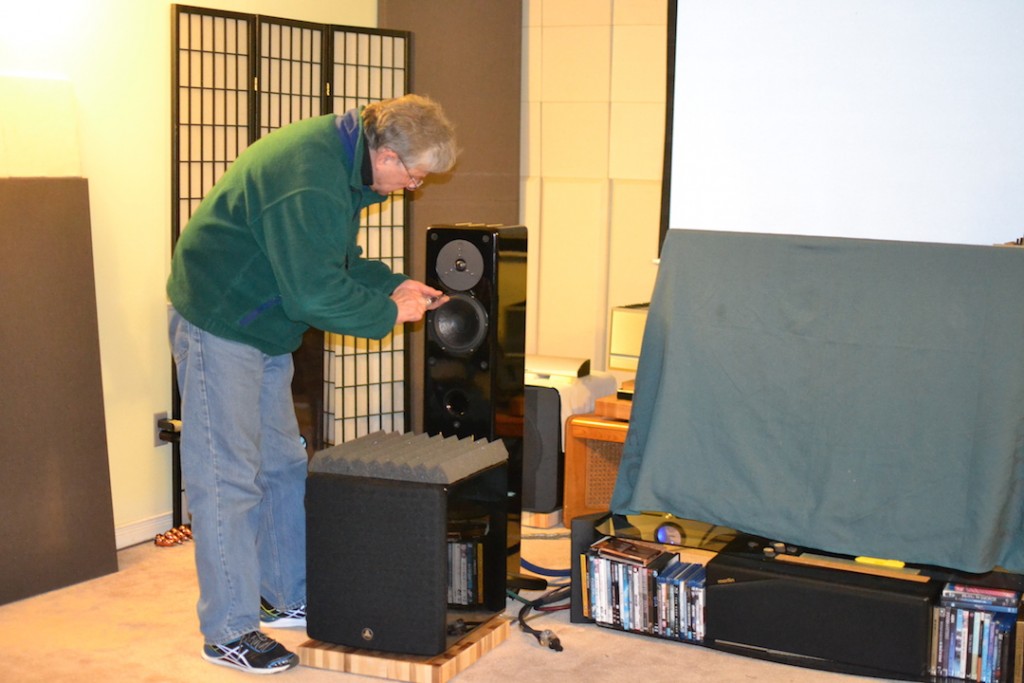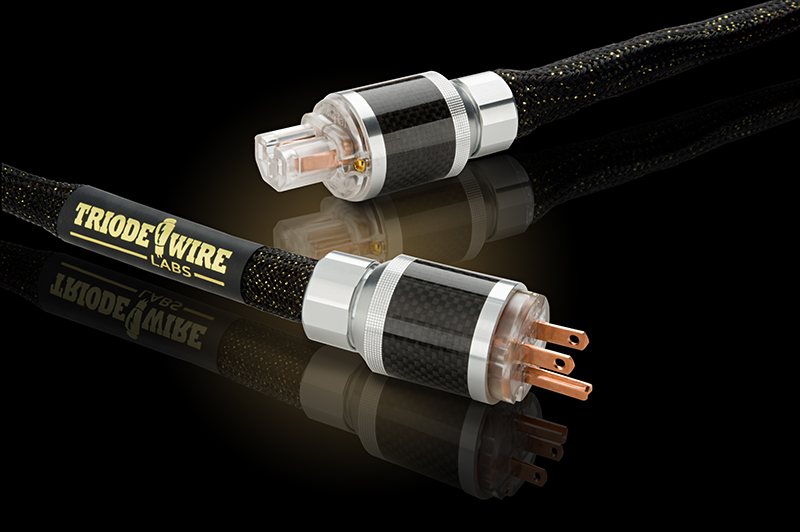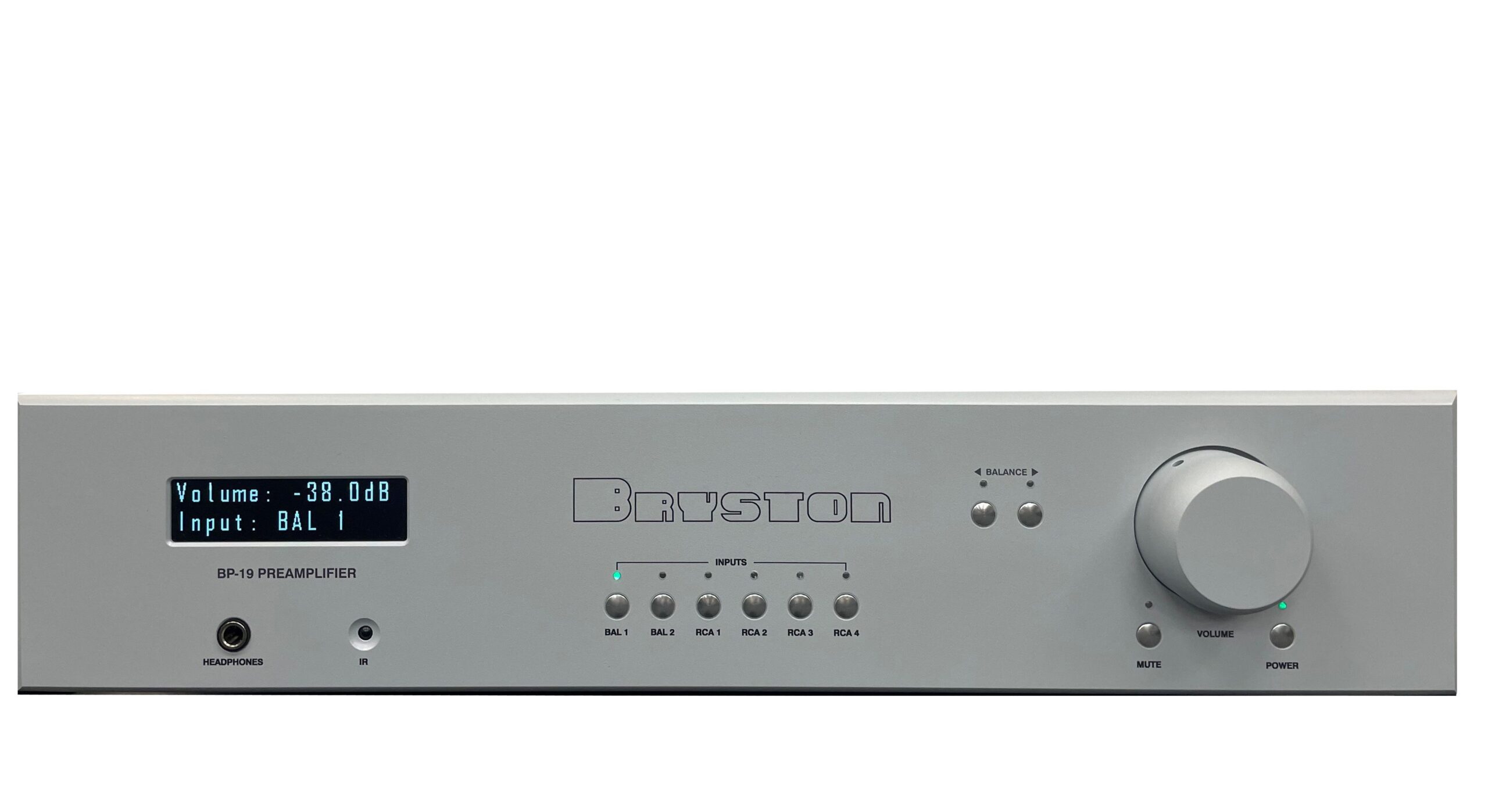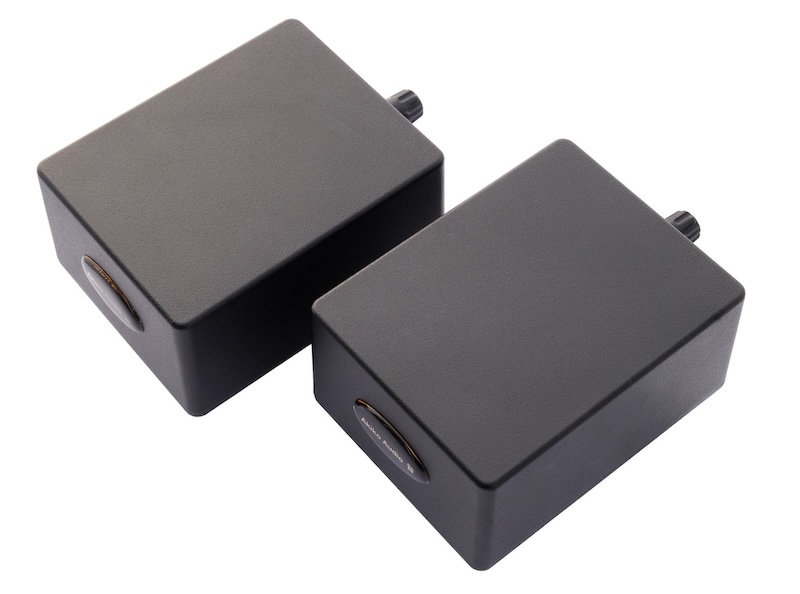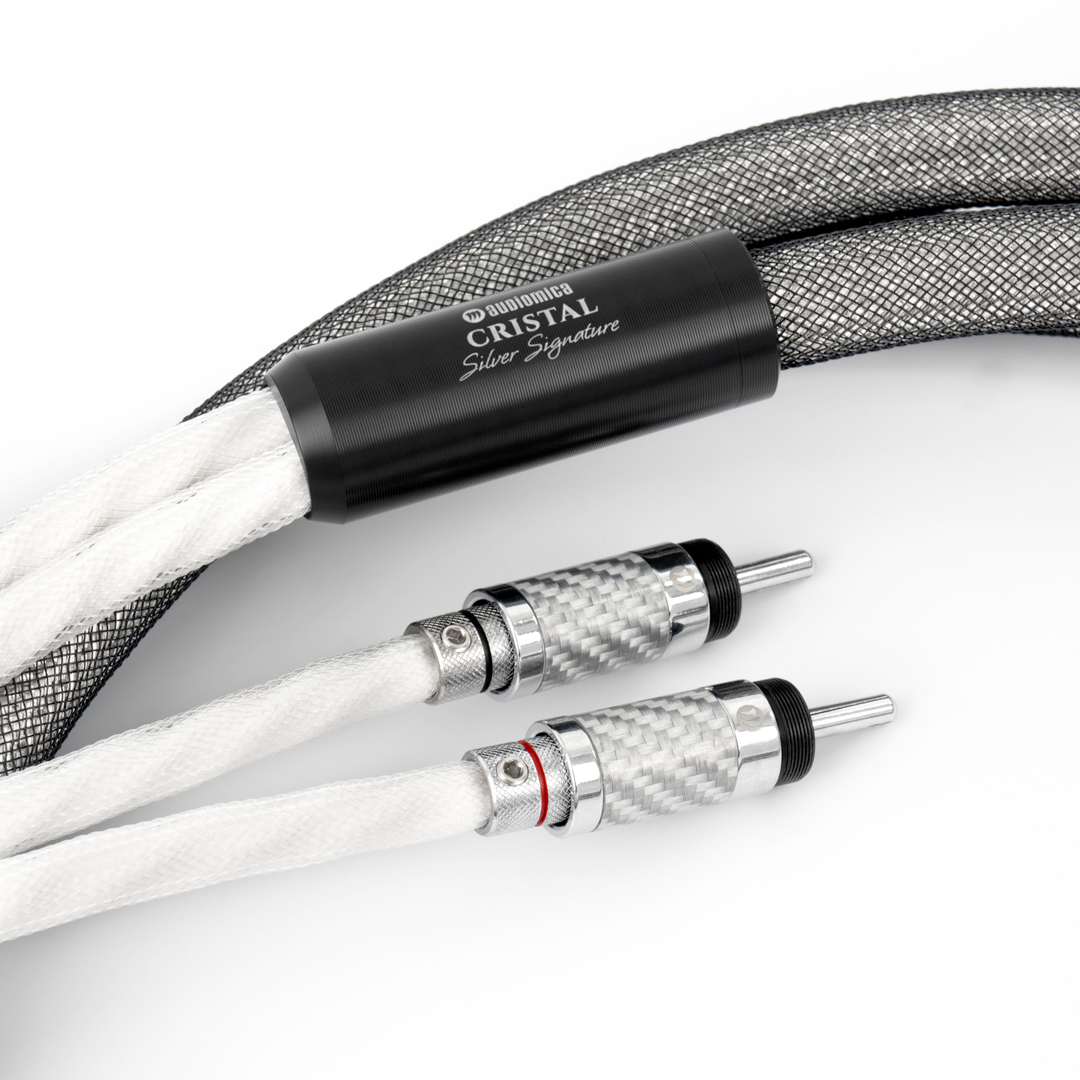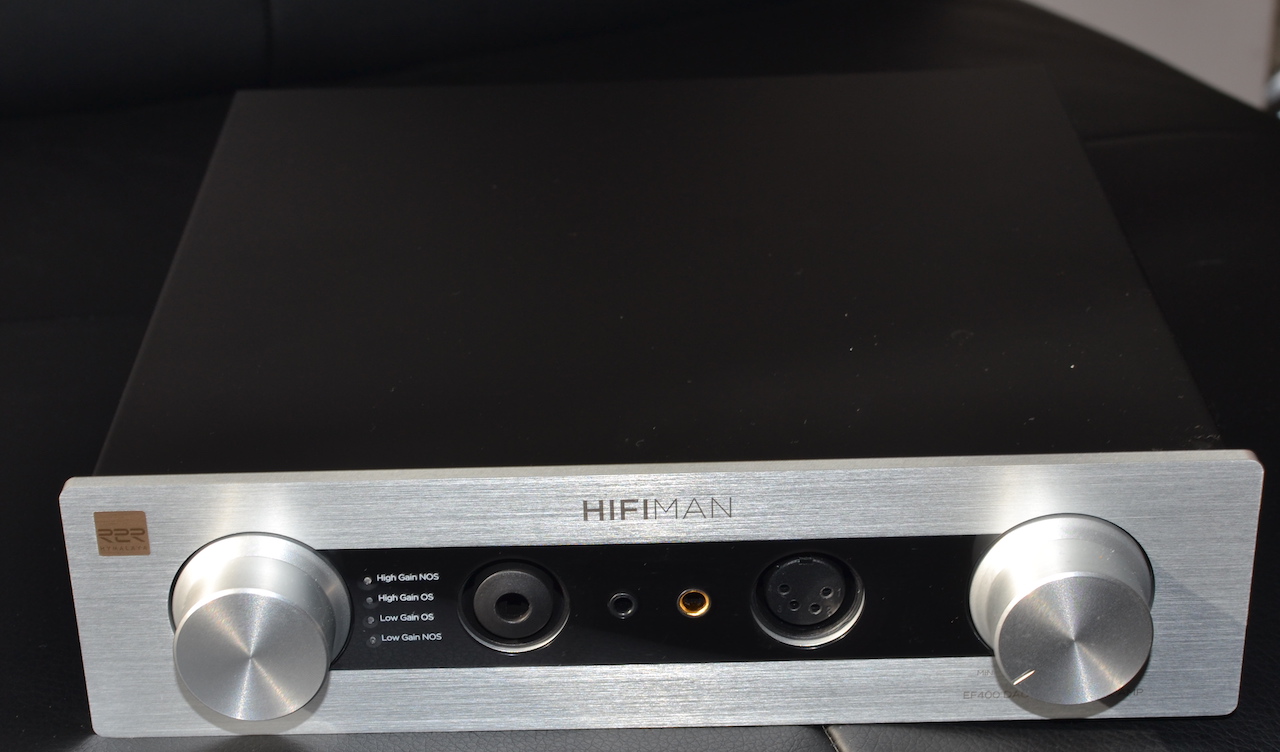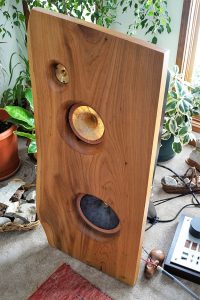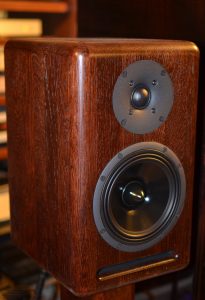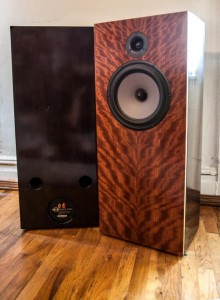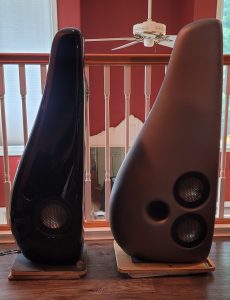One of the classics in the world of automobiles is the Porsche 911 and, in my opinion, the closest that any high-end audio product has come to emulating that automobile legend would be the Merlin Music VSM. Like the 911, the VSM started life as a timeless design, and like its automobile counterpart, the VSM has retained its very sound basic design while delivering significantly better performance with every iteration by making seemingly small but very impactful performance tweaks.
Along the way, the VSM has garnered a legion of ardent followers, many of whom preferred to upgrade their VSM to the latest iteration rather than buy another speaker. The Internet has a number of forums where VSM owners wax lyrical about their beloved speakers, with many of them opining that the VSM got them off the upgrade treadmill, making it the last speaker that they would every own.
 My first encounter with the VSM was many moons ago at the CES. It was a sensory discombobulating experience to be sure. My eyes told me that I was listening to a petite 2-way mini-monitor speaker designed to look and act like a floor stander. However my ears conveyed a totally different story. The sound I was hearing, was as big as a house, as real as terra firma, and as seductive as Mrs. Robinson in the movie The Graduate.
My first encounter with the VSM was many moons ago at the CES. It was a sensory discombobulating experience to be sure. My eyes told me that I was listening to a petite 2-way mini-monitor speaker designed to look and act like a floor stander. However my ears conveyed a totally different story. The sound I was hearing, was as big as a house, as real as terra firma, and as seductive as Mrs. Robinson in the movie The Graduate.
Given that the woofer of the VSM was only 6.5 inches, I remember looking all around the room for a subwoofer while Bobby Palkovich, the refreshingly outspoken gentleman who designed the speaker, looked on in amusement before telling me that if I was looking for a subwoofer I was wasting my time. That began a long and enduring friendship during which time the VSM underwent numerous refinements, each time resulting in a significantly better performing speaker system.
In the world of high-end audio, where there is a tendency to push the performance envelop by resorting to dramatic 'new and improved' designs using exotic unobtanium materials, there are not too many companies that focus on constantly refining a proven basic design in a seemingly never ending quest to squeeze out every single bit of performance that the design can yield.
Bobby has always eschewed the glamour of exotic new 'flavor of the month' designs, preferring to stick with a tried and true basic design and invest his time, energy, and smarts to periodically make meaningful enhancements by seemingly small changes which yield surprisingly large, and easily detectable improvements in performance of the only two models of speakers that his company crafts; the mini-monitor TSM and the floor stander VSM.
Around a year ago, I got a phone call from a very excited Bobby. He bubbled with enthusiasm as he described to me his latest iteration of the VSM, which he named "Black Magic." He said that of all the iterations of the VSM, this one was, by far, the biggest leap forward in terms of performance. He could hardly contain himself as he described how he used proprietary Cardas Clear wiring, cryoed versions of the new UpTone Musicap capacitors, and a new solder formulation that receives a special connection treatment. He went on to describe how he now treats the woofers of the VSM with a special coating that truly optimizes the low frequency performance. I found Bobby's enthusiasm very infectious, and so arrangements were made for me to review his latest VSM iteration.
Technically, the VSM is a front-vented design with the port tuned to 37Hz. The cabinet is made out of pan fiber held together with super strong polyurethane glue. The front baffle is an unusually thick 1.5 inches. The gently curving front edges of the speaker cabinet minimize diffraction. There are three brass tuning rods on the front and top of the speakers that add to the sleek, sophisticated look of the speaker. These rods are not just cosmetic; rather, they serve to control the pitch movement of resonance patterns in the baffle.
The VSM employs a Scanspeak 6.5 inch woofer that incorporates a paper carbon-fiber cone, a cast aluminum basket, and low diffraction rubber surrounds. These are especially made to Bobby's specifications. The VSMs tweeter is the venerable Dynaudio Esotar D330/A, which is considered by many, to be one of the best tweeters in existence today. The crossover is 12dB per octave, with a crossover point at 2200Hz. Both drivers are wired in electrical phase, are impedance corrected, Q circuited, and have fixed outputs.
I am in the camp that believes that with today's technology, a well-designed, intelligently engineered two-way speaker system has some significant sonic advantages over all but the very best and sometimes obscenely priced three-way systems. One significant advantage that a two-way system has is that it is exponentially easier to design a crossover network that coherently blends two drivers as opposed to achieving the same level of top to bottom continualness when blending three different drivers.
Many of the three-way speaker systems I have reviewed deliver sound that is relatively incoherent, mainly because having three sets of drivers creates an additional cancellation node which adds even more to the problem. In fact I have heard a few three-way systems from highly reputed brands where I could plainly tell that the three drivers sound quite separate from each other, and that is a far cry from what you hear at a live performance. I have also found that, generally speaking, it is easier to design and build a speaker system that sonically disappears and creates a solid, holographic and believable sound stage when it is a two-way system rather than a three-way design.
The VSM comes with its own RC (Zobel) network and jumper cables. The RC network incorporates Duelund capacitors, which are uber expensive, but Bobby justified incorporating them because, he said, they help the speaker deliver sound that is a lot more relaxed and room filling, with increased micro and macro dynamics, and more expansive portrayal with significantly more contrast potential for an overall sonic image that is more realistic. If the amplifier you use with these speakers incorporates a Zobel network, you do not need the RCs provided by Merlin Music.
Bobby strongly recommended against bi-wiring or bi-amping his speakers unless specific wire gauges are used. The jumpers provided are specifically designed to optimize the performance of the tweeters. I called Bobby's bluff by bi-amping and bi-wiring the speakers with very high quality cables I had on hand, and found that Bobby was right; there was distinct deterioration in sound quality.
Now we come to a part of the VSM that has stirred up quite a bit of controversy, the bass augmentation module (BAM). It is controversial because of its subsonic bass roll-off filter that eliminates frequencies below 27 Hz and above 200 kHz. It also adds a 5.2 dB boost at 35 Hz. Detractors of the BAM claim that if the speaker had been designed correctly, there would be no need for a module to tweak the frequencies, which according to them, is just an attempt to try and correct deficiencies in the speaker.
My initial reaction to the BAM was one of guarded skepticism, as the argument of its detractors seemed to make sense in theory. However, once I heard the VSM with the BAM, all my doubts vanished faster than a 4.186 kHz staccato note on a grand piano. I have to assume that most of the detractors probably never heard the speakers with the BAM and so, formed opinions based on the commonly held belief that the less circuits you put in the signal path the better will be the ultimate sound quality you get.
In reality, eliminating out of band frequencies unburdens the amplifier and speaker of frequencies that could lead to significant intermodulation distortion, which is typically indicated by weak, ill-defined, boomy bass. The upper cut-off frees the system from high frequencies that are well beyond the human audible spectrum and which could result in undesirable electromagnetic interference. The BAM is therefore designed to allow the VSM Black Magic to generate clean, controlled, deep and tuneful bass that would otherwise require a speaker cabinet that is around twice the size of this speaker which results in a loss of 3 to 6 db in efficiency; a very elegant solution to be sure!
The BAM is available in various permutations and combinations. You could opt for a single ended, fully balanced, dual ops (XLR and RCA) or dual mono configuration. The BAM needs to be placed in the signal path. It can be placed between the source component and the preamplifier (for single source systems), between the preamplifier and the power amplifier or in the tape loop of the preamplifier or integrated amplifier. Having tried all three options I settled on the second one.
The frequency response of the VSM Black Magic is 33Hz to 22kHz +/- 2 dB, 1 meter on axis. According to Bobby, optimum listening is achieved at 10° off axis where the frequency response improves to 36Hz to 20kHz +/-1.5dB. To get the speakers to the optimum toe-in position of 10 degrees, vis-à-vis the sweet spot, Bobby provides a wooden alignment tool that makes it very easy, simple, and quick to toe-in the speaker to just the right angle.
What makes the VSM Black Magic a very easy load to drive, even with relatively low output tube amplifiers, is the fact that it has a sensitivity of 89 dB, and a nominal impedance of 8 ohms with a minimum impedance of 6.5 ohms. This is complemented with a 15.6 ohms crossover point. Power handling is rated at 200 watts maximum, with a minimum of 17 watts for tube and 25 watts for solid-state amplification. Bobby's confidence in his speakers is reflected in an impressive 10-year warranty that covers both parts and labor; significantly higher than the industry average.
The Black Magic BAM uses a power supply that, according to Bobby, is 50 times quieter than previous units. Its bass EQ circuit has a Q that has been optimized to provide improved definition and more uniform bass character. Bobby also revised the circuit board to help it better withstand mishandling during shipping. The BAM can be switched to operate in pure battery mode, and to my ears improved the sound quality in that it was more effortless and relaxed.
The VSM Black Magic benefits greatly from correct placement. If you do take the time and make the effort to get them in the optimum position vis-à-vis your room you will be richly rewarded. I found that using the Cardas method of placing speaker was a great starting point for the VSM Black Magic. From there it required just a little tweaking to lock the sonic image into place. The alignment of the speakers is also crucial to getting the best out of the VSMs. An alignment level tool is provided and should be used.
Although the VSMs come with some very sharp spikes, Bobby opined that coupling the speakers directly to the floor rather than through a carpet would deliver a 5% to 10% improvement to the sound quality. My listening room has a concrete floor covered with Berber carpet. Bobby suggested that I cut the carpet under the speakers using a very sharp knife and let the speakers couple directly to the concrete. He rationalized it with the fact that I could replace the carpet at any time and the seams would not be seen.
I have a very understanding wife who tolerates most of my audiophile idiosyncrasies, but she emphatically drew the line at cutting out sections of the carpet in the middle of the room. The review was therefore done with the speakers on a bamboo platform that rested on the carpet. Bobby helped me get this configuration right, and he was surprised at how close this came to coupling the speakers directly to the concrete floor.
So was Bobby's enthusiasm about the VSM Black Magic justified? That is what this review aims to find. At the very outset, I would like to disclose that the VSM Black Magic has got to be one of the more difficult speakers I have reviewed. This is because they are amazingly neutral and offer a truly transparent window into the quality of the recording and the upstream electronics that you use. This being the case, what I ended up noticing during the audition are the quality of the recording, characteristics of the source components, the pre and power amplifiers, the cables and interconnects, and the power conditioners that I used with the VSM Black Magic. I now realize why dozens of manufacturers of high-end audio upstream components use Merlin Music Loudspeakers as their monitors when designing and testing their components. Many recording studios around the world also use these incredible transducers as near field and mixing monitors.
As a reviewer, I feel it is part of my mandate to let readers know the sound characteristics of an audio component. With the VSM Black Magic that is easier said than done, because this speaker hardly has any sound characteristics of its own. This is a double-edged sword, because if you use them with well recorded and mastered tracks and upstream components and cables that are as neutral as today's state of the art allows, and which have good synergy between them, you will be rewarded with a performance that approaches the sublime. On the flip side, if you use the VSM Black Magic with poorly recorded music and upstream components that have distinct sound characteristics, then it is the sum total of these characteristics that you will hear from these speakers.
One point of disagreement I had with Bobby is about how forgiving the VSMs are. He opined that they are quite forgiving. I beg to differ. I found the VSM Black Magic to be ruthlessly revealing when driven by substandard upstream components and software, mercilessly showing all their flaws. I tried out the VSM Black Magic with several permutations and combinations of upstream components and finally settled on the Ayre CX-7e CD player, iMac running iTunes with Amarra Symphony, the Calyx Femto DAC, the Bryston BP26 pre amp, Pass Labs XA100.8 power amps, and Skogrand Beethoven cables and interconnects. This combination of components really made the VSM Black Magic sing.
The other aspect that made it so difficult to review these speakers is that, with the upstream components and software that I used, they did such a great job connecting me emotionally with the musicians and what they communicate through the music, my focus kept drifting from analyzing the sound to enjoying the emotional connection with the artistes. I often got lost in the emotional embrace of the music and had to refocus on the performance characteristics and making notes on the same. I kept asking myself; how do I describe the sound characteristics of a speaker that adds little, if any, of its own character to the sound? It's not easy, but I'll give it my best shot!
The VSM Black Magic is the closest of any multi-way dynamic speaker I have heard to emulating a very high quality single full-range driver unit speaker or a top-notch electrostatic or planar speaker. It delivers a seamless, coherent top to bottom rendering of the audible frequency spectrum, while plunging the depths of audible bass frequencies that most single driver or panel speaker can only dream of delivering with any degree of verisimilitude.
Bobby has managed to conjure up a way to make the woofer and the tweeter work together so incredibly seamlessly that the sound is amazingly continuous across all audible frequencies. I now understand why many call him, the 'Wizard of Hemlock." Hard as I tried, I was not able to detect a transition point from the woofer to the tweeter. This also helps the VSM Black Magic create one of the best side to side, top to bottom, and back to front sonic holographic images I have heard from any speaker irrespective of price; an amazingly coherent three dimensional sound stage in the true sense of the word.
I could not resist inviting a few die-hard electrostatic speaker fans to audition the VSM Black Magic. Their collective chins promptly hit the floor as they proclaimed that this speaker was the first dynamic transducer they heard that matched electrostatic speakers for that midrange magic that they had, hitherto, believed was the exclusive domain of true high-end, crossover free, panel speakers. If you belong to the audiophile sub-set that just cannot reconcile to speakers with crossover networks and the compromises they represent, I would strongly urge you to audition the VSM Black Magic. It might just change your view that crossovers are a necessary evil that always results in compromised sound quality.
The VSM Black Magic reproduces micro and macro dynamics with electron microscope precision, but they are far from analytical, on the contrary, when fed with good recordings through neutral upstream components, they are one of the most musical speakers I have ever heard. They had the uncanny ability to size each instrument just right. I have heard some mega buck speakers, especially the ones with cabinets that are larger than coffins, make percussion instruments sound much larger than they really are, which detracts quite a bit from the enjoyment of the music.
The VSM Black Magic is also a maestro at reproducing voices. It renders voices with so much texture, body, palpability, and emotion; it was not at all difficult for my brain to conjure up the presence of an actual flesh and blood human body in the listening room, as the source of the voice.
The small footprint and dimensions of the VSM Black Magic, also helps it pull off a truly remarkable disappearing act that not too many speakers are capable of. Especially when I close my eyes, my ears could detect a very well defined, solid sound stage that seemed to be totally independent of the speakers. In fact when my wife heard these speakers for the first time, from the sweet spot, she found it hard to believe that they were the source of the sound she was hearing till she walked up to one of the speakers to verify it! The rounded front edges are so well designed and ease diffraction out of the equation so well, if you stand behind the speakers, you could swear that the VSM Black Magic is equipped with a rear-firing tweeter.
Some of the tunes I used for the audition included The Very Best of Emmylou Harris, Boz Skaggs – Dig, Nikolai Rimsky-Korsakov – Scheherazade, Cantate Domino (Oscar's Motet Choir), Yim Hok-Man Master of Chinese Percussion, Nils Lofgren - Acoustic Live, and Jazz at the Pawnshop. This selection runs the whole gamut from whisper soft melodies that caress your ears, to tutti crescendos that soar to the heavens, from seductive male and female vocals, to crisp drum tracks, from smooth, relaxed, and laid back tunes, to totally in your face arrangements.
The Black Magic VSM is able to handle the incredible dynamic range of the Nikolai Rimsky-Korsakov Scheherazade album significantly better than its predecessor. The sheer energy in "Keith Don't Go" by Nils Lofgren came through with a lot more aplomb with the Black Magic VSM, as was the intimacy of the setting in which the Jazz at the Pawnshop album was recorded. I have never heard the Yim Hok-Man Master of Chinese Percussion album reproduced with more punch and majesty on any other two-way speaker in this price range. I also found more presence and palpability the vocals on the and Boz Skaggs Dig than any other speaker in the VSM Black Magic price range. Chorals are a challenge for most speakers, but not for the VSM Black Magic, which delivered the voices on the Cantate Domino (Oscar's Motet Choir) album in a way that I could actually detect the different voices that made up the choir without having to strain to do so.
I could not detect any significant weaknesses in the VSM Black Magic unless you consider the absence of sub 30Hz frequencies to be one. However there were a whole lot of strengths. The voices of Emmylou Harris and Nils Lofgren came through with almost the same emotionally laden magic, as you would detect if you heard them live. The deep bass contained in "Poem of Chinese Drums" is a challenge for most speakers, but the VSM Black Magic took it in its stride, rendering every percussion instrument with superb dexterity and tautness.
Choral performances are always a daunting task for most speakers, but the VSM Black Magic is able to deliver even multitudes of voices on "Cantate Domino" with the same finesse that gives you goose bumps when you listen to this performance live.
Few tracks have the enormous dynamic range of Rimsky-Korsakov's Scheherazade. I have made many speakers scream with pain when made to play this album at high SPLs. Not so with the VSM Black Magic. Their 111dB peak SPL capability allows this speaker to take even music with unusually wide dynamics in its stride.
Four aspects of sound that you hear at a live performance that no speaker I have heard has been able to emulate to perfection are the dynamic range, the air around each instrument, the harmonics, and the way the leading edge of each musical note is rendered. In my opinion, these four are among the leading elements of sound that help our ears decipher if we are listening to a live performance or a reproduction of the same. The VSM Black Magic is right up there with the very best speakers I've heard in this regard.
Though still different enough from the live performance in these four aspects to tell that it is not live, with the VSM Black Magic there were many moments during the audition when I experienced what I like to refer to as 'scary real' moments. These are instances where a particular passage is rendered so close to what you hear at a live performance in terms of dynamic range, air around the instruments, harmonics, and reproduction of the leading edges; it startles me for a moment. I can't recall another speaker that gave me more 'scary real' moments than the VSM Black Magic.
Another aspect of the VSM Black Magic that puts it into a select group of speakers is its ability to render subtle micro details without sounding mechanical; on the contrary, the sound is so velvety smooth, liquid, relaxed, and effortless, I did not experience any fatigue, even during very long audition sessions. I've listened to many fine high-end speakers that thrilled me with their performance, but not too many were able to sustain the sense of enjoyment for more than a couple of hours without fatigue setting in.
For such a petite speaker, the VSM Black Magic can play surprisingly loud before I detected compression and other forms of distortion. Bobby claimed that it could put out an impressive sound pressure level of 111dB peaks, which is not that far from the loudness level you get at a live rock concert performance. The band that held the Guinness Book of World records title in 1972 for the loudest rock concerts in the world is Deep Purple. Their concert generated an SPL of around 117dB, which was enough to render 3 people from the audience unconscious. Having attended my share of Deep Purple live concerts I can confirm that VSM Black Magic in full voice gets you closer to live rock concert performance SPL levels than most of the other 2-way speakers I have reviewed.
I have a collection of around 72,000 tracks across my vinyl, CD, and high-rez digital music track music collection on my computer. For most reviews, besides the albums I mentioned, I use suitably challenging tunes to put the audio component through its paces, to push it to its limit in order to see how each component handles various genres of music. In this process, with most speakers, I am able to unveil quite a few flaws. With the VSM Black Magic, this was a futile exercise as the sheer transparency and neutrality of these speakers when driven by upstream components that were equally neutral, meant that it only ended up showing specific characteristics and flaws in the recordings.
Merlin Music's line-up of speakers has undergone quite a few changes. The TSM MMi and VSM MMi were replaced by the TSM MM-m and VSM MM-m respectively. Those were then replaced with the VSM MXM and TSM MXM (Master) and earlier this year, Bobby introduced the Black Magic Versions of the TSM and VSM.
Having had extensive listening sessions with the MXM version of the VSM, it was not so difficult for me to tell the differences between that version and the Black Magic version. I can say, hand on heart, the Bobby's claim that the Black Magic version is the biggest leap in performance from one Merlin Music iteration to another. My overall impression is that the MXM, for all its virtues, still sounded mostly like recorded music, while the Black Magic version sounds a lot more like live music.
When listening to the MXM really closely, I could hear a hint of a nasal quality to the vocal reproduction. That has been totally eliminated in the Black Magic. The midrange of the Black Magic is a step back from the MXM, which helps it integrate a lot better with the treble and bass passages of the music. The sound stage is distinctly broader, taller, and wider giving the Black Magic a much more three dimensional sound stage. There is also distinctly more air between the instruments.
With the Black Magic version I found even less need for a subwoofer than I did with the MXM because the bass is more taut, tuneful, and authoritative. However, they still benefitted significantly when mated to a pair of JL Audio f-112 subs. Merlin Music Speakers have always been known to deliver incredibly good top to bottom continualness, but the Black Magic takes it to new level. The whole presentation is distinctly more relaxed and effortless.
Bobby's speakers have always been known to have an incredible sense of timing, delivering near-perfect PRAT. This sense of timing seems to have carried over to his life as well as he delivered to the audiophile community, his Magnum Opus in the form of the Black Magic VSM, just before he departed for the great high-end audio soundscape in the sky on the 20th of August 2015. Rest in eternal peace dear friend and thanks for the memories, and the enduring sonic legacy that you have left behind!
Black Magic VSM Premium Finish (Piano Black) with RCA Master BAM & Master RC's - $13,600
Merlin Music Systems Inc.
4705 Main Street, PO Box 146
Hemlock, New York 14466
PH (585) 367-2390




